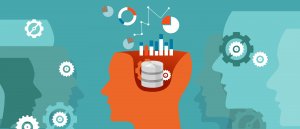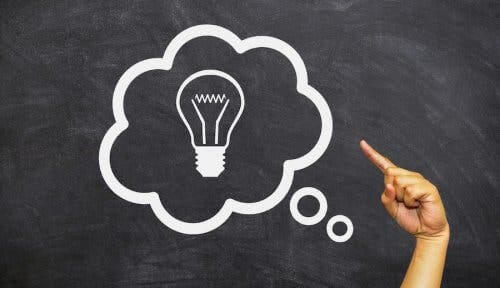What’s Thinking-Based Learning?


Written and verified by the pedagogue and trainer María Matilde
The goal of thinking-based learning is for people to develop mental skills that help them think in a more orderly, methodical, and careful way and to be able to reflect on their own thoughts.
TBL or thinking-based learning
Thinking-based Learning (TBL) is a methodological approach to teach reasoning. To do this, students need to learn and develop certain skills and mental habits.
In a thinking-based learning approach, developing effective thinking is a primary educational goal for students. In other words, the goal is to achieve a mindset capable of making decisions, arguing, analyzing, being creative, and being critical.
Robert Swartz, the main representative of thinking-based learning, in his book Thinking-Based Learning: Promoting Quality Student Achievement in the 21st Century, defends the need to work and exercise effective thinking, which implies knowing and assimilating the necessary procedures to achieve this type of thinking. These procedures are higher-order reasoning and analytical and reflective skills.

Three basic pillars of effective thinking
In adults, developing effective thinking, as we mentioned above, involves applying mental skills that help them develop better in different areas of life, both daily and professionally. In this regard, we could say that effective thinking consists of:
- Firstly, thinking skills. Reflective and appropriate procedures for each particular situation.
- Also, habits of the mind. This means that the use of the skills we mentioned above should become a normal practice in people. Here are certain habits that contribute to effective thinking:
- Persisting in a task that requires thinking, managing impulsivity, and taking reasonable risks when thinking and acting.
- Listening with attention, understanding, and empathy.
- Reflecting in a flexible way and responding with curiosity and interest.
- Asking questions and raising issues, seeking precision and accuracy, and communicating clearly and precisely.
- Thinking independently and maintaining an open posture to continuous learning.
- Creating, innovating, imagining, and finding humor.
- Collecting data using all the senses.
- Applying knowledge acquired in the past to new situations.
- Likewise, metacognition (thinking about thinking). Once the habit of thinking has been incorporated using the thinking skills we mentioned, metacognition refers to reflecting on the thinking skills you use in situations. In short, it’s about thinking and analyzing the mental processes you’ve used to make decisions and act.
Thinking-based learning from childhood
We just described the characteristics of thinking-based learning to develop an effective way of thinking in adults. But what about young children? Is it possible to start developing an effective way of thinking from an early age?
Precisely, Robert Swartz affirms that it’s possible to develop thinking skills in young children by teaching them certain practices – such as comparing and contrasting situations to find important similarities and differences and drawing conclusions.

Those who defend thinking-based learning maintain that the habits of the mind must be worked on in academic situations from childhood. In this regard, Swartz also establishes three types of thinking that should be taught to children:
- Conceptualizing, understanding, ordering, developing, and progressively building ideas.
- Solving problems, identifying what it is, and why there’s a problem. Finding possible solutions and deciding which is the best and why.
- Making decisions and choosing the best course of action.
The goal of thinking-based learning
The goal of thinking-based learning is to teach people how to think. Its goal is to make students engage in cognitive tasks to tackle the contents that they’re taught from an early age. Thus, they must learn from a young age to plan and guide their own thoughts, as a way of reflecting before making a decision.
In short, a person who thinks is able to analyze a situation rigorously and efficiently, evaluating what to do. In addition, they also evaluate the tools, skills, and mental habits available to them in order to make the best possible decision.
The goal of thinking-based learning is for people to develop mental skills that help them think in a more orderly, methodical, and careful way and to be able to reflect on their own thoughts.
TBL or thinking-based learning
Thinking-based Learning (TBL) is a methodological approach to teach reasoning. To do this, students need to learn and develop certain skills and mental habits.
In a thinking-based learning approach, developing effective thinking is a primary educational goal for students. In other words, the goal is to achieve a mindset capable of making decisions, arguing, analyzing, being creative, and being critical.
Robert Swartz, the main representative of thinking-based learning, in his book Thinking-Based Learning: Promoting Quality Student Achievement in the 21st Century, defends the need to work and exercise effective thinking, which implies knowing and assimilating the necessary procedures to achieve this type of thinking. These procedures are higher-order reasoning and analytical and reflective skills.

Three basic pillars of effective thinking
In adults, developing effective thinking, as we mentioned above, involves applying mental skills that help them develop better in different areas of life, both daily and professionally. In this regard, we could say that effective thinking consists of:
- Firstly, thinking skills. Reflective and appropriate procedures for each particular situation.
- Also, habits of the mind. This means that the use of the skills we mentioned above should become a normal practice in people. Here are certain habits that contribute to effective thinking:
- Persisting in a task that requires thinking, managing impulsivity, and taking reasonable risks when thinking and acting.
- Listening with attention, understanding, and empathy.
- Reflecting in a flexible way and responding with curiosity and interest.
- Asking questions and raising issues, seeking precision and accuracy, and communicating clearly and precisely.
- Thinking independently and maintaining an open posture to continuous learning.
- Creating, innovating, imagining, and finding humor.
- Collecting data using all the senses.
- Applying knowledge acquired in the past to new situations.
- Likewise, metacognition (thinking about thinking). Once the habit of thinking has been incorporated using the thinking skills we mentioned, metacognition refers to reflecting on the thinking skills you use in situations. In short, it’s about thinking and analyzing the mental processes you’ve used to make decisions and act.
Thinking-based learning from childhood
We just described the characteristics of thinking-based learning to develop an effective way of thinking in adults. But what about young children? Is it possible to start developing an effective way of thinking from an early age?
Precisely, Robert Swartz affirms that it’s possible to develop thinking skills in young children by teaching them certain practices – such as comparing and contrasting situations to find important similarities and differences and drawing conclusions.

Those who defend thinking-based learning maintain that the habits of the mind must be worked on in academic situations from childhood. In this regard, Swartz also establishes three types of thinking that should be taught to children:
- Conceptualizing, understanding, ordering, developing, and progressively building ideas.
- Solving problems, identifying what it is, and why there’s a problem. Finding possible solutions and deciding which is the best and why.
- Making decisions and choosing the best course of action.
The goal of thinking-based learning
The goal of thinking-based learning is to teach people how to think. Its goal is to make students engage in cognitive tasks to tackle the contents that they’re taught from an early age. Thus, they must learn from a young age to plan and guide their own thoughts, as a way of reflecting before making a decision.
In short, a person who thinks is able to analyze a situation rigorously and efficiently, evaluating what to do. In addition, they also evaluate the tools, skills, and mental habits available to them in order to make the best possible decision.
All cited sources were thoroughly reviewed by our team to ensure their quality, reliability, currency, and validity. The bibliography of this article was considered reliable and of academic or scientific accuracy.
- Swartz, R. J., Costa, L., Beyer, B. K., Reagan, R., Kallick, B. (2013). El aprendizaje basado en el conocimiento. Cómo desarrollar en los alumnos las competencias del S. XXI. Ediciones SM. Recuperado de http://ww2.educarchile.cl/UserFiles/P0001/File/robert-swartz/libro-aprendizaje-basado-en-el-pensamiento-cap1.pdf
- Swartz, R. (2019). Pensar para aprender. Editorial EDICIONES SM.
This text is provided for informational purposes only and does not replace consultation with a professional. If in doubt, consult your specialist.








